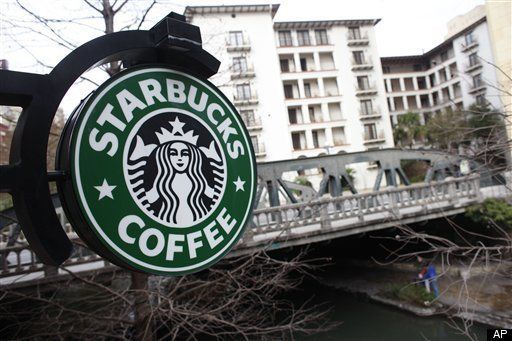
One of the hazards of earning a Ph.D. is that everything you encounter afterward becomes a hypothesis to be tested. For me this means that much of my life has become an ongoing experiment in sustainable consumption within the constraints of suburban American life. Often it's about pushing physical and the social limits of things and behavior. For example, I have a decade old Toyota Corolla with well over 100K miles (still pup in Toyota-years) that runs great but provides a constant source of embarrassment to my family ("Can't you pick me up in Mom's car?"). I probably wait too long to replace my razors, toothbrush and the like, but these are the sustainability actions you can take around the edges.
My latest experiment was this. After hearing Starbucks executives describe their exhausting efforts to engage the entire supply network around developing a cup that can be value cycled over and over again, I got to thinking about cycling an existing cup myself. So the next time I went into Starbucks, I drank my coffee and put the empty in my car's cup holder. When I got to work it went on the desk until my mid-morning trip to the office coffee pot, where I gave it a quick rinse and refilled it. The cup then followed me everywhere. To my executive education sessions, where I refilled it and used it as a discussion point with a group of bemused oil and gas managers. To the campus cafeteria, where I was happily given a discount for bringing my own container.
This went on for about a week with no glitches. The cup was surprisingly durable, rinsed out nicely and never got skanky. And I figured I had already avoided perhaps a dozen cups by this simple act. And I was growing fond of my new sidekick. What happened next, however, sucked the wind out of my balloon.
On Friday I finally returned to a Starbucks. The cup was triumphantly returning home. I proudly presented my cup at the counter and said I wanted a refill. Without saying a word the barista dumped the cup in the trash. She returned with a brand new seasonal Christmas cup complete with its post-consumer waste collar and plastic top. I know its stupid to become personally invested in a paper cup, but I was distressed.
"Why did you throw it out?" I protested "I said I wanted it refilled."
"I know, but we are not allowed" she said rolling her eyes "to refill them."
No one in the store knew exactly why, but the first suspect was someone in the corporate council's office afraid of a lawsuit.
Now scientists recognize that one example is an anecdote and not conclusive. But the plural of anecdote is called data, so I tried the experiment again. Several times. No Starbucks barista was willing to refill my returned paper cup. But, interestingly, they were more than happy to refill my returned plastic reusable cup. Which begs the question, what's the difference? Germs? Fear of cup failure and third degree burns?
I know there are probably lots of reasons including legal concerns, city health codes, high margins on selling reusable cups and the like, but whatever the problem, the situation points to an opportunity for clever sustainable business thinking. Assuming liability, regulatory and other concerns can be allayed, you can image baristas writing your name on your cup, just like they write your order for a skinny decaf latte. You could also see little boxes printed on the cup for checking each time you reuse it, perhaps with a free coffee or other incentive after you pass say 5 or so refills. I haven't run the numbers, or done the life cycle assessment, but I suspect reusing the cup a handful of times will help save money and the planet. And it will give green minded customers a way to keep score and show the world what they are doing to live up to their sustainability values.
Starbucks is managed by smart people and I am sure this is not an original idea, so I am surely missing something with this simplistic assessment, no?